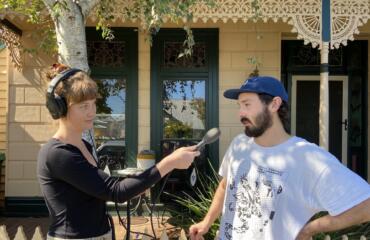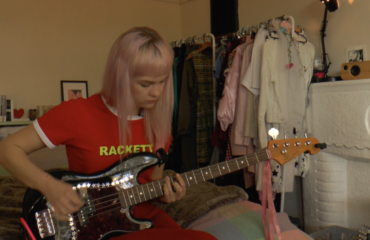Melbourne’s celebrated screen culture is under siege, with several of Melbourne’s longest-standing independent cinemas forced to close, while others struggle to keep their doors open and screens lit.
Tom Schouten, owner of Metro Cinemas in Boronia, says the rise of streaming and a shortage of new film releases post-pandemic have badly affected independent cinema operators.
“Most cinemas had reserves or had resilience to get through COVID,” says the proprietor of the family-run cinema in Melbourne’s outer-east.
“They just did not have the return to business that they were hoping and expecting.”

Tom Schouten says that if not for his family’s resilience the recent downturn of major blockbuster titles would have doomed Boronia’s Metro Cinemas. Photo: Ashleigh Wyss
Nine Victorian cinemas have closed since the beginning of the pandemic, a number which recently grew when Croydon Cinemas and Sorrento’s Athenaeum held their final screenings in April.
David Kilderry, owner of the Lunar Drive-In in Dandenong, has announced the historic site is slated to close by the end of July.
Having failed to make a post-pandemic comeback due to skyrocketing land taxes amid the current cost of living crisis, Kilderry says that his is unlikely to be the last movie theatre threatened with closure.
“There are cinemas right across Melbourne that are under threat, and a lot of them are flying close to the wind,” he says.

Surging land tax and dwindling earnings has meant the end for Dandenong’s Lunar Drive-In cinema, one of only three remaining in Victoria, say owners David and Matthew Kilderry. Photo: Ashleigh Wyss
Scott Mcquire, a professor of media and communications at the University of Melbourne, says the rising popularity of streaming services like Netflix, Binge, and Amazon Prime are an enormous threat to the industry.
“The key drivers [of film consumption] are convenience and price. As home viewing equipment has become better, people can replicate that cinematic experience, and cinema has to develop its own game accordingly,” says McQuire.
McQuire says the shift towards at-home entertainment is evidence of a troubling trajectory in the industry.
“[S]treaming services are taking significant audiences but they’re not contributing to Australian industries,” he says. “The employment that you would lose without cinemas is something to consider.”
Since the pandemic, the theatrical release windows for major film titles – that is, the time a film spends in cinemas before being released to home video – has been halved since 2019. Kilderry says streaming has further limited the release window, trimming cinemas’ earnings as a result.
“The moment people can get it at home there’s generally a pretty big drop [in cinema ticket sales]. And it’s not only when it’s released [to video], it’s people knowing it’s going to be released early,” says Kilderry.
“It’s probably 10 per cent of the problem, but a lot of cinemas rely on that 10 per cent as their profit.”
Screen Australia reports that Victorian cinema revenue was down 15 per cent in 2022, recording a gross box office of $265 million.
While this is a drastic increase from the $93 million made in 2020, revenue has still failed to return to pre-pandemic levels, which peaked at $343 million in 2018.
Australian multiplex cinemas Hoyts and Village recorded 85 per cent and 65 per cent of pre-pandemic revenue respectively.
Schouten says independent cinemas have been hit even harder.
Metro Cinemas Boronia made only 51 per cent of its pre-pandemic revenue in the last year, the average for independent theatres, according to Schouten.
Schouten, who has managed the multi-screen cinema alongside his wife and daughter for 18 years, says he was unsure whether his business would be able to survive, as post-pandemic blockbuster releases become few and far between.
“We really are like squirrels gathering nuts. You get it when you can, and you feed off that [until] you can get to the next gathering of nuts,” he says.
Melbourne University’s McQuire says cinema’s social dimension is its best defence as that experience cannot be replicated at home.
Schouten agrees. “Movies are escapism,” he says.
“When you’ve got two thousand people laughing at the same thing, when you’d play it in the drive-ins you’d hear the laughter coming out of the other cars. It’s magic, it really is magic.”



